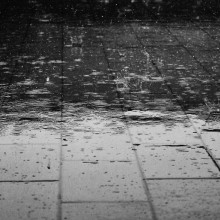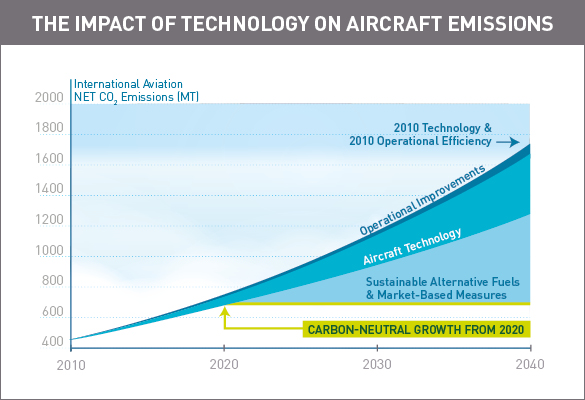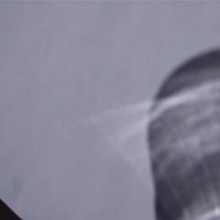Naked Science Question and Answer
Drs Dave, Chris and Phil of the Naked Scientists discuss contaminated petrol, astronauts in danger of lung diseases, a new way to put the brakes on car accident rates, gas sensors made from silicon replicas of marine algae, how pollution is causing droughts, plus they answer your wierd and wacky questions.
In this episode

- Pollution, Mountains and Rainfall
Pollution, Mountains and Rainfall
Pollution seems to be affecting rainfall in mountainous areas, there have been many reports of this over the last few years but now there is some hard evidence for this effect.
Daniel Roesnfeld of the Hebrew University in Jerusalem has been studying rainfall, and the amount of pollution on Mt Hua, a sacred mountain in China, over the last few decades. He has compared this rainfall with an area of plains a few km away. As the pollution has increased the amount of rain the mountain gets compared to the plain has decreased.
Rain is produced on mountains (orthographic rainfall) is produced when humid air is blown into the mountain, so it has to rise, this causes it to cool, and the moisture condenses onto bits of dust etc into small drops, then these collide and grow to the point they fall out of the cloud as rain.
If the air is clean, not very many drops form to start with, so they grow quite large and it doesn't take them long to grow big enough to fall as rain, however if the air is polluted, there is much more dust, so far more drops form to start with, so they are much smaller and it takes them many more collisions and much longer to grow large enough to fall as rain, by which point the air is often down the other side of the mountain.
This could be a big issue for many polluted areas that are dependent on mountain rains for their water.
Putting the brakes on car accidents
Canadian researchers have come up with a way to make the roads safer, with a revolution in brake-light design. University of Toronto researchers Zhonghai Li and Paul Milgram realised that although brake lights signal when a car in front may beslowing down, they give no indication of how hard the brakes have been applied. To get around this problem they came up with triangular brake lights that grow larger and also move outwards the harder the brakes are applied. They start off as a triangular cluster of three lights on each side close to the middle of the car. With more urgent use of the brakes the lights enlarge and move outwards. When they tested the system on 40 drivers using a simulator the biggest gains were during poor driving conditions.
The team hope that their new invention, which they aim to build using low-power LEDs, will make a significant dent in the numbers of rear-end collisions, which make up about 30% of road crashes in countries like the US, UK and Australia.
Making light of asteroid spin
Scientists in Helsinki have spotted an asteroid behaving badly, and it's all down to light. Mikko Kaasalainen, from the University of Helsinki in Finland, has been watching an asteroid called Apollo, which is about 1 mile across and spinning. But careful measurements have revealed that the asteroid is very slowly altering its rotational period, by about one 4000th of a second every year. It's the result of a phenomenon called the YORP effect, short for Yarkovsky-O'Keefe-Radzievskii-Paddack effect. This occurs when light hits a surface and gives it a push. But because the asteroid is an irregular shape some parts of it receive a bigger push when sunlight hits it than other parts. The result is that the object's rotational period begins to change. So could this push an asteroid into the path of the Earth, provoking a collision? "Theoretically yes," says Kaasalainen, "but the reverse is also true and scientists have suggested making part of the surface of an Earth-bound asteroid more reflective to take advantage of this effect and avoid a collision". The observations are published in this week's Nature.
Finding the killer asteroid
NASA have just published a report on how the should look for asteroids that may be on killer orbits and collide with the Earth, like in the Hollywood blockbuster Deep Impact.
Space is unfortunately a big place and asteroids are pretty tiny by comparison, being only metres or kilometres across. This makes them very hard to spot. Despite this NASA estimates that there are around 20,000 asteroids bigger than 140 metres across that would wipe out a whole city if they hit the Earth, and we don't know where most of them are. Such an asteroid would leave a crater around 3 miles in diameter and destroy everything for miles around. We believe that a much smaller object, about 10 metres across, hit Siberia in the early 1900s and laid waste to 2,000 square km. We estimate that an object on this scale hits the Earth roughly once every 250 years. There may even be some huge asteroids bigger than 10 km on collision course with Earth. These are much rarer, hitting about ever 25 million years, but one of these would cause Tsunamis, climate change, earthquakes and volcanic eruptions, devastating whole continents.
The solution is to put a telescope in space to look specifically for them. But where? It seems that the best place is near Venus. This is because sometimes asteroids come from the direction of the sun, which makes them hard to spot, like a fighter pilot attacking from the sun. Because Venus is closer to the Sun than Earth we can spot any asteroids coming from that direction. Unfortunately this mission would cost about 700 million pounds (1 billion dollars) and NASA don't have the budget to do it. Until they do we'll just have to keep our fingers crossed that the next killer asteroid hasn't already got us in its sights.

- Tobacco-powered aeroplane to be tested ‘within months’
Tobacco-powered aeroplane to be tested ‘within months’
Researchers are getting ready to test a tobacco-powered aeroplane thanks to a new bio jet fuel made from the seeds of nicotine-free plants, and the result could be a 75 % reduction in carbon emissions compared to fossil fuels.
Dr Sergio Tommasini has a dream: fields of tobacco as far as the eye can see, thousands of hectares of green stretching across South Africa, Brazil and Europe.
But he is not some latter-day pedlar of a cancer-causing weed. In fact, if you smoke one of his leaves you'll likely spit it out in disgust, says Dr Tommasini, managing director of Sunchem Holding, an Italian research and development company.
For this tobacco has no nicotine. It is grown for its seeds, which are rich in oil that can be used to make bio jet fuel.
And a tobacco-powered Boeing plane will be roaring along the Cape Town-Johannesburg corridor conducting tests within months, if things go to plan.
'It's going to be the greenest flight ever,' said Dr Tommasini.
Launched in December 2014, Project Solaris is a collaboration between his company, the sustainable jet fuel supplier SkyNRG, and some private investors, supported by South African Airways and the aerospace company Boeing. The EU has part-funded their feasibility study to test the viability of the process before it is scaled up.
The hybrid tobacco, Solaris, for which Sunchem holds the international patent, currently grows on 50 hectares of land in Limpopo province, in the northeast of South Africa. Some two to three tonnes of crude oil can be pressed from its seeds per hectare per year, says Dr Tommasini.
Solaris has been bred to have leaves much smaller than the flappy ones of a normal tobacco plant, and to have oily seeds. The scientists believe it can overcome the notorious troubles that arose around first-generation biofuels such as sugar cane and maize, accused of competing with food production.
In South Africa, at least, it won't be food-versus-fuel, but fuel-versus-smokes - and Solaris could also be used in rotation on the 70 000 hectares of cotton plantations in the country, says Dr Tommasini.
Elsewhere, such as in Europe, it could be rotated with food crops, which would enhance the soil and break disease cycles. Meanwhile, the leftovers from seed-pressing yield a rich animal feed.
'It's not toxic, so it is feeding into the nutrition cycle,' he added.
Aviation
So, is tobacco the answer to the dreams of the aviation industry?
In 2015, Solaris became certified by the Roundtable on Sustainable Biomaterials (RSB), a global scheme supported by the World Wide Fund for Nature (WWF), supporting the sustainable production of biofuels and other biomaterials.
Over the lifecycle of the fuel, it will lead to a cut of 75 % in carbon emissions compared with its fossil fuel counterparts, says Dr Tommasini -- much better than the threshold of a 50 % reduction set by the RSB.
But Dr Jeremy Woods from the Centre for Environmental Policy at Imperial College London, UK, who is not involved in the project, says that, however hard they try, such lifecycle calculations can't fully take into account the carbon cost that comes with the clearing of virgin land for cultivation - which can happen indirectly because the original crop has been displaced to some other, previously unplanted terrain.
He recently calculated that four million hectares of land would need to be deployed to biofuel crops in order to supply the aviation industry.
"On the one hand it's very unlikely that biofuels could service today's and the future aviation industry," says Dr Woods. But a more nuanced goal, in which biofuels are a partial and intermediate solution, looks more feasible.
"If you see biofuels as a share of a transition programme, then it suddenly doesn't look impossible," he says.
 |
|---|
Tree tobacco
Head north-east from South Africa and you'll hit the island of Madagascar, where scientists are growing a single hectare of the toxic, invasive tobacco tree, Nicotiana glauca -- known for its love of the driest, hottest, most inhospitable patches of our crowded planet - which they want to turn into a source of sustainable energy and materials.
Tree tobacco is a mostly unwelcome addition to a nation's flora. It is indigenous to South America, and is smoked by some Native Americans, but it is tenacious and invasive in many parts of the world. Victims of its poisonous leaves include some people who have mistaken it for spinach, and a number of ostriches.
But lately scientists have grown excited about its extraordinary ability to do without groundwater and its apparently low demand for other essentials such as the nitrogen required for photosynthesis.
"It's an incredibly hardy species and the growth is really quite astounding," says Dr Alisdair Fernie, of the Max Planck Institute of Molecular Plant Physiology in Potsdam, Germany, who coordinates the MultiBioPro project, an industry-academic partnership funded by the EU.
This is a plant that does not need pampering with micro-irrigation, a common technique when farming in very dry soil. Instead it appears to absorb moisture from the air through its pores.
"As a potential biofuel this is essentially gold dust," says Dr Fernie. "It grows not even on marginal land but land that is completely bankrupt for agricultural use."
Work on N. glauca is less advanced than on Solaris. Field trials have been done in the United Arab Emirates, and the hectare under cultivation in Madagascar will soon be harvested and the seeds taken to Germany for an attempt at biorefining for jet fuel, or as an additive to other fuels to reduce their emission of particulates and carbon monoxide.
As with Solaris, finding multiple uses for every part of the plant is thought to be key to its success, so MultiBioPro is also considering how the tree's biomass can be processed into other products.
Within the toxic leaves lurks Vitamin D - a product increasingly in demand as a supplement - and these also contain solanesol, widely used in the pharmaceutical industry. Another strand of research in the programme is looking at other chemicals it might produce...

- Science Update - Polio and Viruses
Science Update - Polio and Viruses
with Chelsea Ward and Bob Hirshon from AAAS
Chelsea - Since 1955 America has spent 35 billion dollars on Polio vaccination, that might seem like a lot but that spending has generated a net saving of over 180 billion dollars, that's according to a new analysis by scientists at the Harvard School of Public Health. Lead author Kimberly Thompson says they modelled how the disease would have spread without vaccinations and then estimated how much it would have cost to treat it.
Kimberly - People often don't realise that its hard to get credit for things that don't happen. This is a real challenge because with respect to public health because if people don't see the benefits of intervention but they look at the cost, then they might misperceive in fact how very valuable public health interventions are.
Chelsea - She says that's an important lesson not only for efforts to eradicate Polio in developing countries, but also for healthcare systems in developed countries where emergency treatment often trumps preventative care.
Bob - A new kind of drug may fight viruses and other causes of disease by silencing their genes. The key ingredient is small interfering RNA, a molecule that can block specific genes from making proteins. Julie Leberman from Harvard Medical School says such drugs would have broad potential.
Julie - Since the machinery for RNA interference exists in all cells, this natural pathway can be used to silence any gene that might be involved in disease.
Bob - In animal studies, Leberman's team found a way to get interfering RNA into infected cells without affecting healthy cells. Now she and her colleagues are working RNA therapies for a respiratory virus, pandemic 'flu and even high cholesterol.
Chelsea - Thanks Bob, next time we'll look at how global warming could break up some happy symbiotic relationships. Back to you Naked Scientists...

- Silicone in Petrol
Silicone in Petrol
with Richard Van Noorden from Chemistry World
Chris - Earlier this week there were a whole number of retailers who admitted that stocks of their petrol had been contaminated with something that had caused hundreds of cars to grind to a halt, but what was that substance and how did it get into the petrol in the first place? To tell us what he's flushed out in the fuel line about this story, Richard Van Noorden is here from Cambridge-based Chemistry World. Richard what have you found out about this story?
Richard - Well Chris, the culprit was silicone in the petrol causing the cars to judder to a halt. Slightly confusingly though it probably wasn't the element silicon as the silvery-grey semi-metal that you find in computer chips; that wouldn't have got in to the petrol as its not soluble in petrol. What actually happened, was that people who were testing for silicon found the presence of silicon atoms in the petrol and the way you do that - its a bit like your old school flame test - you heat up the petrol and each atom gives off a characteristic wavelength of light and you get that colour that's characteristic to silicon.
Chris - Because this is the way that people work out what is in the sun, if you look at the sun's spectrum you can work out what elements there must be in the sun and in roughly what quantity, because you get light of a very characteristic wavelength coming off.
Richard - Exactly, so sodium street lamps give off that characteristic orangey sort of colour.
Chris - Why was the silicone in the petrol? Do we know?
Richard - We don't actually know why the silicone contaminated the petrol, it shouldn't be in the petrol. As silicones, which is when the element silicon combines with oxygen to form long SI-O -SI-O silicon-oxygen chains with Carbon and Hydrogen hanging off the end of the silicon, these kind of polymers, called silicones, can be gel-like, rubbery
Chris - Its bath sealant isn't it?
Richard - Yes, used also as breast implants, as lubricants as greases so its very likely that silicone which is soluble in petrol caused cars to judder to a halt, because when the silicones burnt when the petrol was combusted, the hydrocarbon bits (the carbon and hydrogen atoms) were burnt off leaving silicon and oxygen - silica which is of course sand, glass.
Chris - So you made sand in your engine?
Richard - You made sand, its going to come out as a kind of whitish deposit and that will clog up the oxygen sensors in the engine. The oxygen sensors just gave up, they said "look we're controlling the flow of fuel and we're being clogged up so we're going to give up and your car is going to judder to a halt."
Chris - So presumably only some cars which would have had high-tech oxygen sensors like this would have been affected?
Richard - Yeah, it looks like older cars actually carried on ok, despite the fact they had an engine full of sand.
Chris - Are there any fuels in which you would normally place silicones?
Richard - Yeah, you would put silicones in diesel where they're anti-foaming agents so they stop the diesel literally foaming up as you're pouring it in. You should never have it in petrol.
Chris - So why don't they form sand in a diesel engine then?
Richard - Diesel is not combusted by sparks, in the same way as petrol is, in diesel you use pressure it also ignites whereas in petrol you're using a spark to burn off the carbon and hydrogen.
Chris - But that shouldn't make a difference to whether there's a heat there that can burn silicone and react with oxygen surely?
Richard - I'm not exactly sure of the answer to that question Chris, but I know there isn't that problem on diesel.
Chris - Maybe its just because diesel engines are so robust that they'll burn anything, what do you think Dave?
Dave - I guess if a diesel engine doesn't have an oxygen sensor its just like an old-fashioned petrol engine so it would just keep on going, there's nothing to gum up.
Chris - Sure, we've now got to the bottom of it - we think its silicone, it got into the petrol it shouldn't have done. Is there any way that we can prevent this happening again?
Richard - One of the problems with finding out that it was silicone was that the standard test for petrol doesn't include a test for silicone because it shouldn't be in there. They test for all the additives in petrol - lead, copper and so on. So harvest energy who are one of the suppliers to the supermarkets like Tesco, that the faulty petrol came from; they say that they are going to now include a standard test for silicone in the petrol whenever they check it. So there's obviously a quality-control, 'how should we check our petrol' issue there.
Chris - Has it ever happened before Richard?
Richard - As far as we know, not in the UK but intriguingly according to the American oil company Chevron's website used toluene which is a solvent, from a manufacturing process containing soluble silicon, has apparently found its way into gasoline as the Americans call petrol and again fouled up oxygen sensors. Now that's on our website and when I checked this with a specialist from the American petroleum institute he couldn't remember details of that so I'm just throwing this out, nonetheless I have had people say this to me; that it has happened in America and somehow re-cycled toluene with silicon in caused the problems and got in to the petrol. Now of course I don't know if that's happened here and no doubt in the next few weeks we'll find out exactly what has happened.
Chris - Thank you Richard, from Chemistry World of the Royal Society of Chemistry, you can see the article Richard has written about this on their website:
www.chemistryworld.org

- Why do large meteors release so much energy?
Why do large meteors release so much energy?
When you actually have a meteor or an asteroid hitting the Earth it doesn't create a nuclear reaction its literally just the energy from the speed that it hits. If you drop a stone off the Empire State building it will probably hit the floor at a few metres per second, when an asteroid comes in and hits the Earth its probably coming in at maybe 20km per second. Incredibly fast - what we call hyper-velocity, and literally that energy from such a massive object, it could be hundreds of metres or even kilometres across, hitting something and basically stopping dead - all that energy from the speed it was going at gets immediately converted into heat or sound waves propagating through the crust of the Earth. It can do immense damage to the Earth and basically blast vast amounts of rock and debris up into the atmosphere which can cause climate change and all sorts of nasty problems.

- Could you use a vacuum to dry clothes?
Could you use a vacuum to dry clothes?
It would certainly work. Drying things by evacuating them definitely works, its how chemists dry chemicals quite often and its how you freeze-dry things like coffee. To be honest I don't know quite how the thermo-dynamics work or whether you use more energy or less energy than you would by just burning gas and heating it up.

- Do things other than the moon get eclipsed?
Do things other than the moon get eclipsed?
What happens with an eclipse with the moon is the Earth passes exactly between sun and the moon, so basically the Earth's shadow is cast on the surface of the moon. Which is why you get that dark colour going across the surface, its sort of a reddish colour basically because you're getting a little bit of light filtering round the edge of the Earth through the atmosphere. The atmosphere lets red light get through better than blue light so you get a reddish tinge to the moon. Other things do get eclipsed, with the sun that's when the moon passes exactly between the Earth and the sun. Actually the day before the lunar eclipse we had an occultation of Saturn, where are moon passed exactly between us and Saturn. So Saturn disappeared out of view, you get the same affect from stars and other planets. They can be really useful things to watch; you can find out about the atmospheres of other planets by watching the stars vanish behind them.
It's a really good way to detect a planet around another sun. As the planet passes in front of that other star it blocks out a little bit of the light and it goes slightly dimmer for perhaps a few hours and we can actually see that from the Earth sometimes and actually work out that there's another planet orbiting around another star somewhere.

- Does a charger switch off at the end of a charge?
Does a charger switch off at the end of a charge?
They will carry on using some electricity but it will be significantly less than it would be using whilst you were charging the phone or whatever. They're not made perfectly and if you don't draw any current they still use some just to heat themselves up and you get losses in places, its quite small maybe less than a fifth of a watt.











Comments
Add a comment